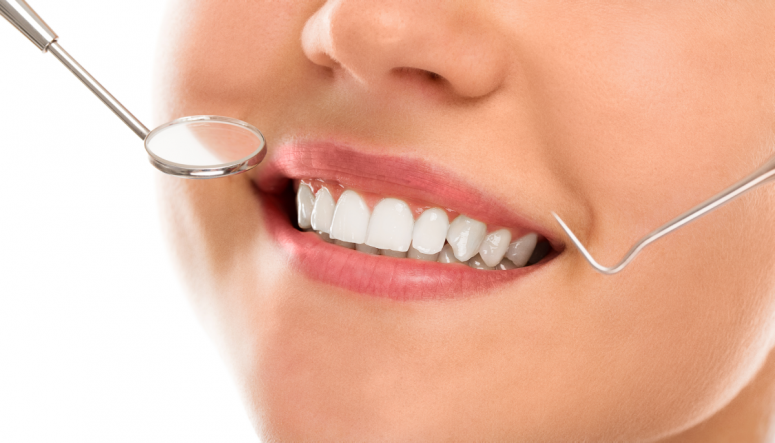Key Takeaways:
- Orthodontics focuses on correcting misaligned teeth and jaws, improving oral health and overall well-being.
- Common orthodontic issues include overcrowding, spacing, overbite, underbite, and crossbite.
- Orthodontic treatment enhances appearance, improves oral health, and corrects bite issues.
- Choosing the right orthodontist involves considering qualifications, experience, and communication style.
- Orthodontic treatment options include traditional braces, clear aligners (like Invisalign), and other appliances.
- Treatment plans are customized for each patient based on their needs and orthodontic issues.
- Maintaining oral health during orthodontic treatment requires proper brushing, flossing, and regular check-ups.
- Avoid sticky and hard foods, and maintain a balanced diet rich in calcium, vitamins, and minerals.
- The Basics of Orthodontics
Orthodontics is a field of dentistry that focuses on correcting misaligned teeth and jaws. It involves the use of various techniques and appliances to achieve a perfectly aligned smile. Orthodontic treatment is not just about aesthetics; it plays a crucial role in improving oral health and overall well-being.
The Importance of Orthodontic Treatment
Orthodontic treatment is not just about having straight teeth; it is essential for proper dental health. Misaligned teeth can contribute to a range of oral issues such as difficulty in chewing, speech problems, and increased risk of tooth decay and gum disease. By addressing these issues, orthodontic treatment can improve the functionality and longevity of your teeth.
Common Orthodontic Issues
There are several common orthodontic issues that individuals may face, including overcrowding, spacing, overbite, underbite, and crossbite. Overcrowding occurs when there is not enough space in the jaw for all the teeth to fit properly. Spacing refers to gaps between the teeth, which can be caused by missing teeth or teeth that are too small. Overbite is when the upper front teeth overlap significantly with the lower front teeth. Underbite is the opposite, where the lower teeth protrude beyond the upper teeth. Crossbite occurs when the upper teeth bite inside the lower teeth instead of outside.
Benefits of Orthodontic Treatment
Orthodontic treatment offers numerous benefits. First and foremost, it enhances the appearance of your smile, boosting your confidence and self-esteem. It also improves your oral health by making it easier to clean your teeth and gums properly, reducing the risk of tooth decay and gum disease. Additionally, orthodontic treatment can correct bite issues, which can alleviate jaw pain and discomfort. By improving the alignment of your teeth and jaws, orthodontic treatment can also enhance your overall facial structure and profile.
- Choosing the Right Orthodontist
Choosing the right orthodontist is a crucial step in your orthodontic journey. You need a professional who not only possesses the necessary qualifications and expertise but also understands your needs and makes you feel comfortable throughout the treatment process.
Qualities to Look for in an Orthodontist
When selecting an orthodontist, it is essential to consider their qualifications and experience. Look for an orthodontist who is a member of professional associations such as the American Association of Orthodontists (AAO). This indicates that they adhere to high ethical and professional standards. Additionally, consider their communication style and demeanor. A good orthodontist should be patient, approachable, and willing to address all your concerns and questions.
Understanding Different Orthodontic Treatment Options
Orthodontic treatment options have evolved significantly over the years, offering individuals various alternatives to traditional braces. Traditional braces consist of metal brackets and wires that gradually move the teeth into the desired position. Clear aligners, such as Invisalign, are a popular alternative as they are virtually invisible and can be removed for eating and cleaning. Other orthodontic appliances, such as expanders and headgear, may be used in specific cases to address jaw discrepancies.
Searching for the Best Orthodontist in Your Area
When searching for the best orthodontist in your area, consider asking for recommendations from your general dentist or friends and family who have undergone orthodontic treatment. Additionally, online reviews and testimonials can provide valuable insights into the quality of care provided by different orthodontists. Schedule consultations with a few orthodontists to get a better understanding of their treatment approach and to see if you feel comfortable in their office environment.
- Exploring Different Orthodontic Treatments
Orthodontic treatments are not one-size-fits-all; they are tailored to meet the specific needs and goals of each patient. Understanding the available treatment options can help you make an informed decision about which approach is best for you.
Traditional Braces vs. Invisalign: Pros and Cons
Traditional braces have been used for decades and have a solid track record of success. They are highly effective in correcting a wide range of orthodontic issues and are typically more affordable than alternative treatments. However, they are visible and require careful maintenance and regular adjustments. On the other hand, Invisalign offers a more discreet and convenient option, allowing you to remove the aligners for eating and cleaning. However, it may not be suitable for more complex cases, and compliance is crucial for successful treatment.
How Orthodontic Appliances Work
Orthodontic appliances work by applying gentle and controlled forces to the teeth and jaws, gradually shifting them into the desired position. Braces use wires and brackets to exert pressure and move the teeth. Clear aligners, like Invisalign, use a series of custom-made aligners that are changed every few weeks to guide the teeth into alignment. Other appliances, such as expanders, are used to create space or correct jaw discrepancies.
Customizing Treatment Plans for Each Patient
Orthodontic treatment plans are highly individualized to meet the unique needs of each patient. Orthodontists carefully evaluate the patient’s dental health, jaw structure, and orthodontic issues before developing a personalized treatment plan. The treatment plan takes into account factors such as the severity of the orthodontic issues, the patient’s age, and their oral hygiene habits. Regular monitoring and adjustments are made throughout the treatment to ensure progress and make any necessary modifications.
- Maintaining Oral Health During Orthodontic Treatment
Maintaining good oral health is crucial throughout the orthodontic treatment process. Proper oral hygiene practices and regular dental check-ups are essential to ensure the success of your orthodontic treatment and overall dental health.
Tips for Brushing and Flossing with Braces
Brushing and flossing correctly is essential when you have braces. Use a soft-bristle toothbrush and fluoride toothpaste to clean your teeth gently. Angle the brush to clean around the brackets and wires, making sure to reach all surfaces. Flossing can be challenging with braces, but tools like floss threaders or water flossers can help get between the teeth and brackets. It is recommended to brush after every meal and floss at least once a day.
Importance of Regular Dental Check-ups
Regular dental check-ups are crucial during orthodontic treatment. Your orthodontist will schedule regular appointments to monitor your progress, make adjustments, and address any concerns. Additionally, it is essential to continue seeing your general dentist for routine cleanings and exams. They can ensure that your teeth and gums remain healthy throughout the orthodontic treatment process.
Nutrition Tips for a Healthy Smile
Diet plays a significant role in maintaining oral health during orthodontic treatment. Avoid sticky and hard foods that can damage braces or get stuck in between brackets. Opt for softer alternatives and cut fruits and vegetables into smaller, manageable pieces. Incorporate a balanced diet rich in calcium, vitamins, and minerals to support healthy teeth and gums. Drinking plenty of water can also help wash away food particles and maintain good oral hygiene.
Orthodontic treatment is not just about achieving a perfectly aligned smile; it is crucial for overall oral health and well-being. By understanding the basics of orthodontics, choosing the right orthodontist, exploring different treatment options, and maintaining proper oral hygiene, you can achieve the smile of your dreams and enjoy long-term dental health.
FAQ
Question: What is orthodontics? – Orthodontics is a field of dentistry that focuses on correcting misaligned teeth and jaws, improving oral health and overall well-being.
Question: What are common orthodontic issues? – Common orthodontic issues include overcrowding, spacing, overbite, underbite, and crossbite.
Question: What are the benefits of orthodontic treatment? – Orthodontic treatment enhances appearance, improves oral health, and corrects bite issues.
Question: How do I choose the right orthodontist? – When choosing an orthodontist, consider qualifications, experience, and communication style.
Question: What are the different orthodontic treatment options? – Orthodontic treatment options include traditional braces, clear aligners (like Invisalign), and other appliances.
Question: How are orthodontic treatment plans customized? – Treatment plans are customized for each patient based on their needs and orthodontic issues.
Question: How can I maintain oral health during orthodontic treatment? – Maintaining oral health during orthodontic treatment requires proper brushing, flossing, and regular check-ups.
Question: What should I eat during orthodontic treatment? – Avoid sticky and hard foods, and maintain a balanced diet rich in calcium, vitamins, and minerals.
Useful Resources
- American Association of Orthodontists
- Invisalign
- The National Orthodontic Association
- MouthHealthy – American Dental Association
- Colgate – Adult Orthodontics
- Your Dentistry Guide
- Mayo Clinic – Braces
- American Dental Association




